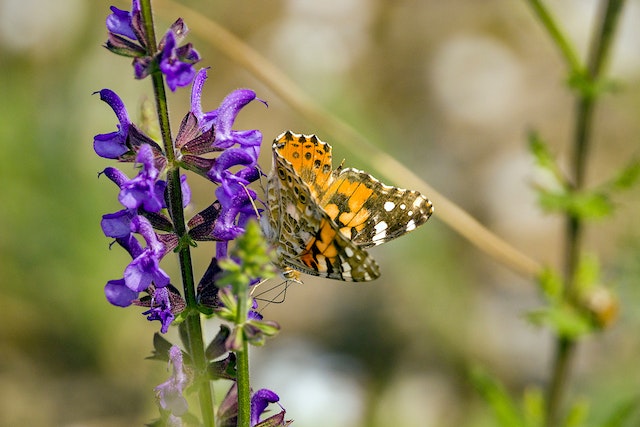The Decline of Pollinators
Over the last four decades, over 50% of Scotland’s pollinators have been driven to extinction. One of the primary reasons for this decline is the loss of wildflower meadows, over 95% of which have been lost since the 1930s. If these trends continue, these species-rich habitats could disappear by the end of the century.
The loss of pollinators (including bees, butterflies, beetles and moths) has a detrimental impact on biodiversity – they help ensure the survival of plants that provide essential food and shelter for many wild animals. In addition to this, we have these insects to thank for every third mouthful we eat – they pollinate over £690 million worth of food in the UK alone each year. Taking on this job ourselves would be incredibly time-consuming and cost an estimated £1.8 billion annually.
However, it is not too late to help alleviate the environmental pressures being faced by pollinators so that we can prevent further decline.
What We’re Doing
The Scottish Wildlife Trust has a number of flagship projects to help pollinators and their habitats thrive.
For example, they are pioneers in the use of conservation grazing to help restore and enhance wildflower meadows, which are some of Scotland’s most endangered habitats. Their sheep and cattle (affectionately known as the ‘Flying Flock’) graze on invasive plant species, allowing more vulnerable species to grow. As rarer plants return, the bees and other pollinators that rely on them for food and shelter, and the birds and mammals which in turn feed upon them, can begin to thrive – ecosystems become healthy and restored.
Conservation grazing isn’t limited to wildflower meadows – different livestock help create the ideal habitats for different species. For example, the Scottish Wildlife Trust also use Highland ponies to graze salt marshes to reduce the height of rushes and maintain open water habitats for wading birds including oyster catchers and lapwings. Many species benefit from this important type of natural habitat restoration.
The Nectar Network also aims to establish connected nectar and pollen-rich sites along the Ayrshire coast in Scotland, ensuring the long-term survival of pollinating insects in the area. Working with local businesses, the Scottish Wildlife Trust aims to remove barriers to pollinator dispersal by filling in the gaps between sites that are rich in wildflowers, thereby giving pollinators the best chances of survival.

About the Scottish Wildlife Trust
Since the Scottish Wildlife Trust was founded in 1964, it has been a strong voice for Scotland’s environment. They develop and lead major landscape projects across the country, support species reintroduction and conservation, undertake education and engagement work, and campaign for nature. The Trust also manages over 100 reserves the length and breadth of Scotland. These cover mountain tops, coastal marshes, sand dunes, cities, towns and villages, coastal cliffs, remote islands, peatlands and woodlands.
Find out more about the Scottish Wildlife Trusts to support the restoration of wildflower meadows to help pollinators thrive here.



